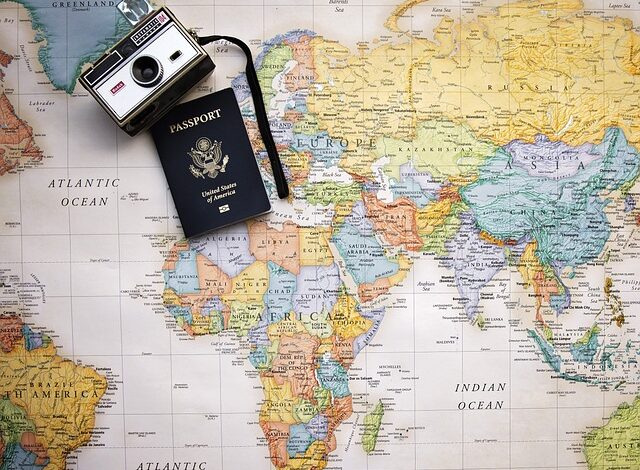Travel Insurance for Adventure Sports in Canada: Is It Necessary?

Canada is a paradise for adventure enthusiasts, offering breathtaking landscapes and thrilling activities such as skiing, snowboarding, rock climbing, whitewater rafting, and more. Whether you’re an adrenaline junkie or simply trying something new, participating in adventure sports can be an exhilarating experience. However, these high-risk activities also come with inherent dangers, making travel insurance a critical consideration.
But is travel insurance for adventure sports really necessary? In this article, we’ll explore the importance of having specialized coverage for adventure sports, the risks involved, and how to ensure you’re adequately protected while enjoying your Canadian escapades.
Why Adventure Sports Require Specialized Travel Insurance
Adventure sports are inherently riskier than conventional travel activities. While standard travel insurance policies typically cover medical emergencies, trip cancellations, and lost luggage, they often exclude injuries or accidents related to high-risk activities. This means that if you’re injured while skiing, mountain biking, or bungee jumping, your claim could be denied unless you have a policy specifically designed to cover adventure sports.
Here’s why specialized travel insurance is essential:
- Higher Risk of Injury Adventure sports involve physical challenges and unpredictable environments, increasing the likelihood of accidents. A broken leg from a ski fall, a concussion from a mountain biking crash, or hypothermia during a winter hike can lead to significant medical expenses.
- Expensive Medical Costs Healthcare in Canada is publicly funded for residents, but visitors must pay out-of-pocket for emergency medical treatment. Without insurance, even minor injuries can result in hefty bills, especially if hospitalization, surgery, or evacuation is required.
- Remote Locations Many adventure sports take place in remote areas where access to medical facilities is limited. Emergency evacuations by helicopter or air ambulance can cost thousands of dollars—a financial burden that travel insurance can help mitigate.
- Trip Disruptions Weather conditions, equipment failures, or injuries can disrupt your plans. Specialized policies often include coverage for trip interruptions or cancellations caused by unforeseen circumstances related to your chosen activity.
The Risks of Not Having Adventure Sports Coverage
If you participate in adventure sports without proper insurance, you expose yourself to several risks:
- Denied Claims: Standard travel insurance policies usually exclude activities deemed “high-risk.” If you’re injured during an excluded activity, your insurer may refuse to pay for medical treatment or evacuation.
- Financial Burden: Without coverage, you’ll be responsible for all associated costs, including hospital stays, surgeries, medications, and transportation back home.
- Legal Complications: Some adventure sports operators require proof of insurance before allowing participation. Failing to comply could result in denied access to certain activities.
- Peace of Mind: Knowing you’re covered allows you to focus on enjoying your adventure rather than worrying about potential mishaps.
What Does Adventure Sports Travel Insurance Cover?
Specialized travel insurance for adventure sports typically includes the following components:
- Medical Emergencies
- Hospitalization and emergency treatment for injuries sustained during covered activities.
- Evacuation services, including air ambulance transport from remote locations.
- Accidental Death and Dismemberment (AD&D)
- Compensation in the event of accidental death or permanent disability caused by a covered activity.
- Trip Cancellation/Interruption
- Reimbursement for non-refundable expenses if your trip is canceled or cut short due to reasons like injury, illness, or severe weather.
- Personal Liability
- Protection against legal liabilities if you accidentally cause harm to others or damage property during your activity.
- Equipment Loss/Damage
- Coverage for stolen, damaged, or lost sports gear, which can be expensive to replace.
- Search and Rescue Operations
- Financial support for search and rescue missions in case you get lost or stranded during your adventure.
Activities Typically Covered Under Adventure Sports Insurance
Not all adventure sports are created equal when it comes to insurance. Policies vary widely in terms of what activities they cover. Commonly included activities include:
- Skiing and snowboarding
- Rock climbing (up to a specified difficulty level)
- Whitewater rafting and kayaking
- Mountain biking
- Hiking and trekking
- Scuba diving and snorkeling
- Zip-lining and bungee jumping
However, extreme sports like BASE jumping, wingsuit flying, or heli-skiing may require additional endorsements or separate policies. Always check the fine print to ensure your chosen activity is explicitly listed as covered.
How to Choose the Right Adventure Sports Travel Insurance
Selecting the right policy requires careful consideration of your needs and the specifics of your trip. Here are some tips to guide you:
- Assess Your Activities Make a list of all the adventure sports you plan to engage in and verify that they’re covered under the policy. Look for exclusions and limitations.
- Check Coverage Limits Ensure the policy provides adequate coverage for medical emergencies, evacuations, and other potential expenses. For example, medical coverage should ideally exceed CAD $100,000.
- Read the Fine Print Pay close attention to exclusions, deductibles, and conditions. Some policies may only cover recreational participation and exclude professional competitions or training sessions.
- Compare Providers Research reputable insurers specializing in adventure sports coverage, such as World Nomads, Allianz Global Assistance, or TuGo. Compare quotes and benefits to find the best value.
- Consider Add-Ons Depending on your needs, you might want to add extras like rental car insurance, personal liability, or coverage for high-value sports equipment.
- Verify Local Requirements Some adventure sports operators in Canada may require proof of insurance before allowing participation. Confirm their requirements in advance to avoid last-minute issues.
Alternatives to Traditional Travel Insurance
If traditional travel insurance doesn’t meet your needs, consider these alternatives:
- Annual Multi-Trip Policies If you frequently travel or engage in adventure sports, an annual multi-trip policy might be more cost-effective than purchasing single-trip coverage.
- Activity-Specific Insurance Some providers offer specialized policies tailored to specific sports, such as ski insurance or scuba diving coverage.
- Credit Card Benefits Certain premium credit cards include travel insurance as part of their perks. Check whether your card offers sufficient coverage for adventure sports.
- Membership Programs Organizations like the Canadian Automobile Association (CAA) or outdoor clubs sometimes provide discounted rates on travel insurance for members.
Is Adventure Sports Travel Insurance Worth It?
The answer depends on your planned activities, risk tolerance, and budget. For casual travelers engaging in low-risk pursuits like hiking or sightseeing, standard travel insurance may suffice. However, if you’re planning to participate in high-risk adventure sports, investing in specialized coverage is highly recommended.
Here’s a quick breakdown to help you decide:
- Yes, It’s Necessary If:
- You’re engaging in high-risk activities like skiing, rock climbing, or whitewater rafting.
- You’re traveling to remote areas with limited access to medical facilities.
- You want peace of mind knowing you’re financially protected in case of emergencies.
- No, It May Not Be Necessary If:
- Your activities are low-risk and already covered under standard travel insurance.
- You have comprehensive health coverage through your home country or employer.
- You’re willing to accept the financial risks associated with uncovered claims.




